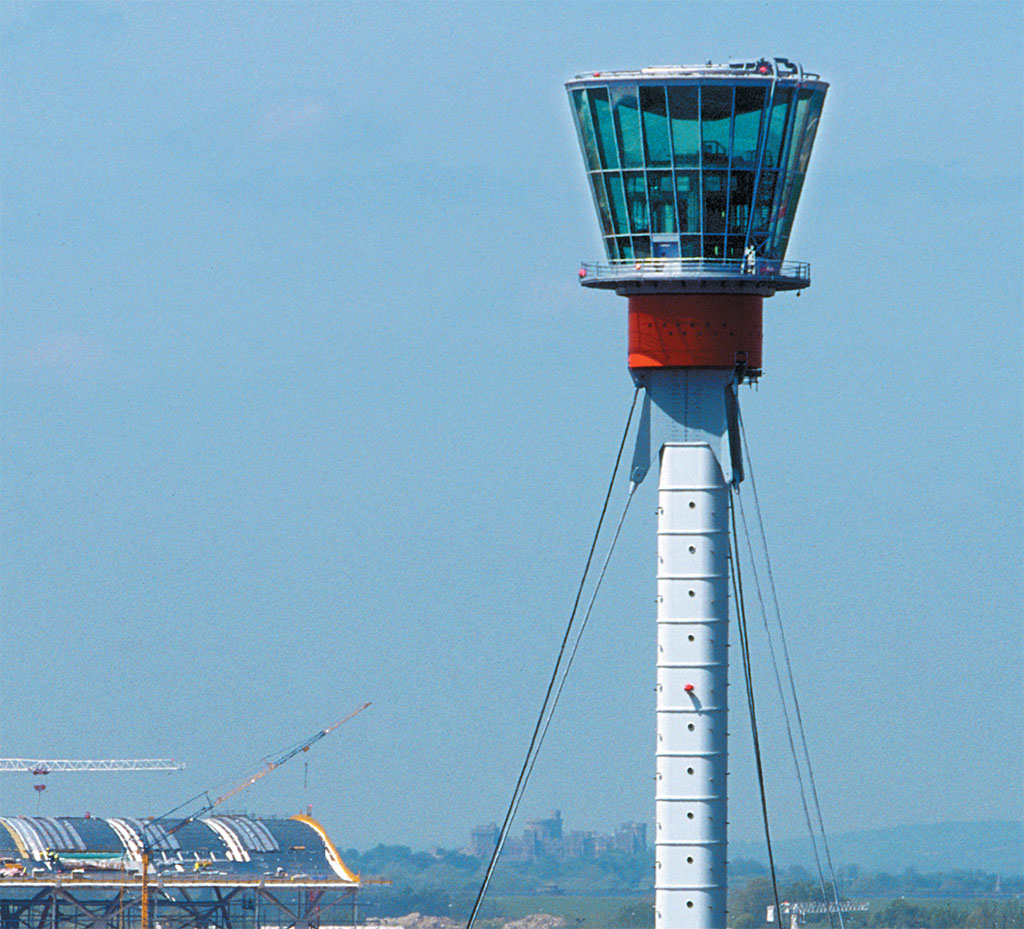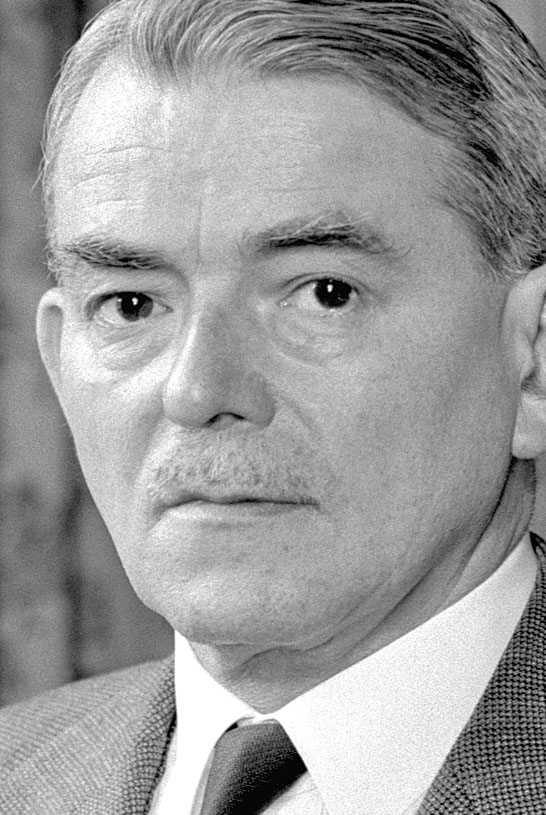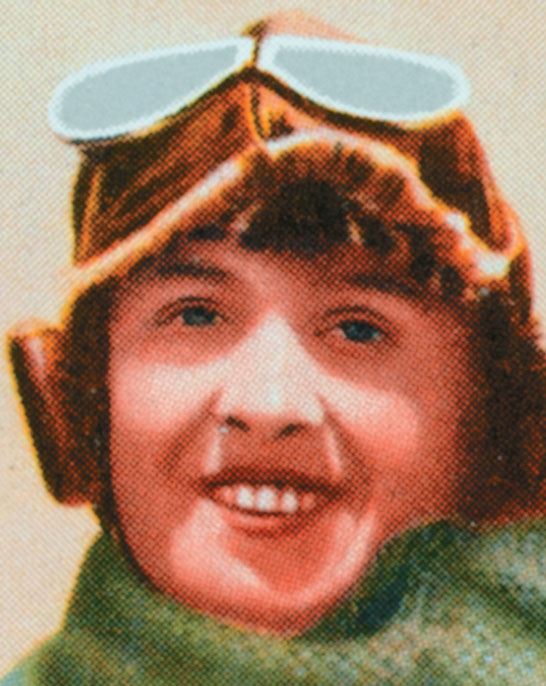
On the 60th anniversary of Heathrow, let’s look at where British aviation has come over the last100 years––and where it’s going
[caption id="ACenturyintheSky_Feature" align="aligncenter" width="1024"]

BRITISH AVIATION AUTHORITY
ALMOST a thousand years ago, inspired by the ancient Greek legend of Daedalus and Icarus, a young monk donned wings and threw himself from a high tower of the Abbey of Malmesbury. Unlike so many generations of intrepid, if over-optimistic, birdmen, Oliver (or Eilmer as he is sometimes known) managed,if not to soar, then at least not to plummet. He crashed to earth in front of startled townsfolk in what is now Oliver Lane,more than a furlong (201 meters) from his starting point, at a cost of two broken legs. Battered but unbowed, he was preparing a new, improved set of wings when the abbey authorities grounded him.
For thousands of years, mankind dreamed of taking to the skies. Nevertheless when, on a chilly December morning in 1903, Orville Wright finally achieved that dream, the response on both sides of the Atlantic was muted. In Britain, the influential Times newspaper ignored the flight completely. One paper, however, was more interested.
The newly established Daily Mail reported the flight of a “balloonless airship” and gave a brief account of the known facts. The Mail’s proprietor, Arthur Harmsworth (soon to become Lord Northcliffe), already a keen motorist, immediately spotted the potential of what he called “the aerial motor car” and began championing the cause of aviation in Britain. By 1906, at a time when a family house in London could be rented for around £100 per year, the Mail was offering the staggering sum of £100,000 to the first pilot to fly the 180 miles between its London and Manchester offices. Other papers jokingly offered prizes for other “flights of fancy”—after all, the distance record was less than half a mile and no one seriously believed that a flight of 180 miles could ever be possible. When a young enthusiast wrote to the Times about the Wright brothers and their achievements, the engineering editor replied that “all attempts at artificial aviation on the basis he describes are not only dangerous to human life but foredoomed to failure from the engineering standpoint.”
Just three years after the Times had dismissed “artificial aviation,” international flights became a reality when, in July 1909, a group of fliers gathered near Calais for the most ambitious challenge yet. The Daily Mail had offered £1,000 to the first pilot to cross the English Channel, and two of Europe’s leading fliers decided to make the attempt. Hubert Latham managed only seven miles before ditching into the sea, but his French rival, Louis Blériot, remained confident. Blériot had arrived at Calais after a record-breaking overland flight of 25 miles, during which his petrol tank exploded, burning his foot. He now approached his aircraft hobbling on crutches and promising his worried wife that this would be his last flight—even he had grown wary after the many accidents he had suffered. Taking off from the field at Les Barraques, Blériot flew over the Channel.
Thirty-seven minutes and 23 miles later, he landed heavily in a field alongside Dover Castle to be greeted by a policeman and a Customs officer who later warned his superiors of the dangers of losing revenue due to “indiscriminate landings of airships in this country.” The reaction of the Times man is not recorded.
As eager young men learned the strange new skills required, war clouds gathered over Europe and soon the pilots would face an even greater danger than the risk of a bad landing. Britain’s Royal Flying Corps (RFC) was preparing itself for an entirely new form of war. Eight “companies” (soon to be renamed “squadrons”) strong, it boasted among its aircraft giant kites for use as observation platforms—an idea first used thousands of years before by the Chinese general, Gonshu Ban—but of its 190 “aeroplanes” at the start of World War I, just 63 were regarded as operational.
In 1908, science fiction writer H.G. Wells predicted a terrible period of aerial warfare, and sooner than anyone imagined, it arrived. On the evening of January 19, 1915, two Zeppelin airships, Luftshiffe 3 and Luftshiffe 4, crossed the coast of East Anglia and then L4 turned north and L3 south. At 8:25 p.m., L3 dropped seven high explosive bombs on the town of Great Yarmouth. In the streets below, 53-year-old Sam Smith had come out of his workshop to watch the airships pass when bomb splinters struck, killing him instantly. He was Britain’s first air raid casualty but, in the next quarter of a century, would be far from the last.
As peace negotiations continued during late 1918, RAF aircraft shuttled diplomats back and forth between London and Paris in converted bombers, completing more than 700 such flights by 1919. With the prospect of being unemployed growing ever closer, enterprising military pilots began looking to their own futures. Civilian flying was allowed to resume, and a Department of Civil Aviation was founded to oversee air navigation rules and the registration of aircraft with the code letters still in use today—starting with G-EAAA. The department also oversaw the issuing of “B” licenses for commercial pilots and by mid-1919 had overseen the first commercial passenger flight piloted by Lt. Col. William Sholto Douglas. In May he flew a converted Handley Page O/400 bomber, carrying 10 passengers from London to Manchester. Soon internal flights were commonplace, and a former wartime airfield at Hounslow Heath near London was designated the first “customs-approved” aerodrome for international flights. In August, four passengers paid £21 each for a single fare to fly them to Paris (including motor transport to and from the airfield). Soon, the Paris route would be joined by regular flights to Brussels, with in-flight catering consisting of a basket of sandwiches, fruit and chocolate at a cost of 3 shillings (around 30 cents) offered to passengers and crew alike!
By 1920 the world’s first purpose-built air terminal had been constructed at Croydon, just south of London, replacing Hounslow Heath where fog had proved to be a problem. With a hotel, repair facilities and links to the city, the Croydon site was regarded as ideal but had one or two small inconveniences—the hangars were on one side of the main road and the runway on the other, so that traffic had to be stopped by a man with a red flag to allow aircraft to taxi across the busy road. Despite this, by the late 1920s, Croydon was the busiest airport in Europe. It was also the place to go for aviation bargains. With the war over, surplus RAF planes were available to the public for as little as £5, with a Sopwith Camel fighter going for around £25.
‘By 1920 the world’s first purpose-built air terminal had been constructed at Croyden, just south of London’
It was in one of these used bargain aircraft that the next great challenge was met. Yet again, the Daily Mail led the way with an offer of £10,000 to the first nonstop transatlantic flight. The paper had already awarded £2,500 to two pilots who had been forced to ditch after 1,050 miles. Then in June 1919, Captain John Alcock and Lieutenant Arthur Whitten Brown returned to a heroes’ welcome when the two former RAF pilots left Newfoundland in a Vickers Vimy bomber and after 16 hours in the air and 1,890 miles, arrived safely in Ireland. Britain had its first peacetime heroes.
With thousands of redundant fliers and easily affordable aircraft, flying became a popular pastime. So much so that the Automobile Association, closely associated with aviation from the outset, offered its members a guide to Britain’s airfields including landing information, local attractions and accommodations (all, of course, AA approved). Everyone, it seemed, was flying. In 1926 the 61-year-old Mary du Caurroy, Duchess of Bedford, took her first flight. Within a year she had flown a journey of 4,500 miles across France, Spain and North Africa with her own private pilot. The adventure encouraged her to begin lessons at the age of 62, and she became one of the best known of the “petticoat pilots” no longer content to let their menfolk have all the fun.
Record after record fell. In May 1927, the BBC broadcast hour-by-hour reports on the progress of Charles Lindbergh and his Ryan NYP Spirit of St. Louis as he flew solo across the Atlantic. More than 120,000 people turned out to greet him as he arrived in Britain from Paris after his epic journey. The editor of The Aeroplane magazine described “scenes of wild enthusiasm, the like of which have never been known in the history of aviation” but felt such behavior was “unseemly” and that the crowd “behaved just like a lot of foreigners”!
In 1928, two more petticoat pilots, Lady Mary Bailey and Lady Mary Heath, inevitably dubbed the “Flying Aristocrats,” completed a series of long-range flights and brought even more glamour to the world of aviation. Stepping out of her tiny Avro Avian III in Cairo after a flight the length of Africa, Lady Heath, an extrovert and colorful Irishwoman, commented that flying “is so safe that a woman can fly across Africa wearing a Parisian frock and keeping her nose powdered all the way.” Meanwhile, Lady Bailey, a mother of five, was making the same journey in the opposite direction. Arriving in Cape Town, she apologized for being later than planned, explaining that she “got muddled up in the mountains.” Elsewhere, Amy Johnson, “the little typist from Hull” (although few realized that she held an economics degree), flew alone from Britain to Australia in 19 days, with only 90 hours flying time in her log book at the start of the journey.
[caption id="ACenturyintheSky_img1" align="aligncenter" width="1024"]

BRITISH AIRWAYS MUSEUM
[caption id="ACenturyintheSky_img2" align="aligncenter" width="546"]

PA/PA ARCHIVA/PA PHOTOS
[caption id="ACenturyintheSky_img3" align="aligncenter" width="546"]

MARY EVANS PICTURE LIBRARY
[caption id="ACenturyintheSky_img4" align="aligncenter" width="1024"]

BRITISH AIRWAYS MUSEUM
In 1929, Imperial Airways announced its first passenger service to India, a journey of seven days and a fare (including hotels on the way) of £130 each way. Two years later, the same airline introduced the Handley Page HP.42E, a purpose-built 48-seat airliner. The prototype, named Hannibal (“to encourage it to cross the Alps” as one critic quipped), was a graceful biplane that epitomized Imperial Airways—“very safe, very reliable and very slow.” It was the first airplane designed with the comfort of its passengers in mind and brought a new dimension to air travel: luxury rather than practicality.
By the 1930s, the flying craze showed no signs of abating. The wealthy could buy an aircraft at Selfridge’s department store on London’s Oxford Street, but for those on a budget, other options were at hand. A Frenchman, Henri Mignet, had been experimenting with gliders and small flying machines and when, in 1934, his book Le Sport de l’air was translated into English, it sold 6,000 copies within a month. The book contained plans for what he called Pou-du-Ciel (the “Flying Flea”), a small, one-seat aircraft powered by a motorcycle or small car engine. The book declared that the airplane could be built by anyone with basic woodworking skills. By 1935 more than 500 were under construction, and regular meetings were held at airfields around the country.
In the dark days after the German conquest of France, Britain stood alone and awaited the invasion that few doubted would come. Before their landing craft reached the beaches, though, the Germans wanted control of the skies. Twenty-five years after the first bombs fell on England, a new aerial “blitz” began. Night after night, German bombers arrived to blast towns and cities into surrender. So many bombs fell that even today, as work begins on developing the land for the 2012 Olympics, planners have had to take account of time loss caused by unearthing unexploded bombs.
The Battle of Britain over, it was time to take the air war to Germany. British and American airmen flooded into the flat country in East Anglia, and the countryside became one vast aircraft carrier with more than 750 airfields in military use. The contribution of those thousands of young men has never been forgotten, and today efforts are underway to preserve many of the fields of “Little America” as a tribute to their sacrifice, with the Imperial War Museum’s Duxford showpiece American Air Museum as a focal point.
Just as after World War I, peacetime passenger flying began using converted military aircraft. Slow to resume in a country where rationing was still in force and few people had the money to travel, passenger flying began again on January 1, 1946, from the old Great Western Airfield created from the small airfields around Hounslow, Harmondsworth and Heston to the west of London. The airport now takes its name from a small village near Harmondsworth—Heathrow.
As ever, war had brought incredible technological advances. Way back in 1930, an engineer at the RAF College named Frank Whittle had submitted a patent for a new kind of engine using jets of air to provide thrust, and by 1939 the Germans had flown a prototype. Britain followed in 1941 but the new planes proved too costly to be used widely. As the war ended, though, the potential for further development grew, and in April 1948, a new age dawned. A wartime bomber design had been adapted to make use of turbojet engines, and on April 6, 1948, an experimental Rolls-Royce Nene-powered Vickers VC.1 Viking, the world’s first jet airliner, took off from London. Four years later, on May 2, 1952, another new plane, the de Haviland Comet—a purpose-built civilian jet airliner—took off for Johannesburg. The age of the “jet set” had arrived.
Today, Heathrow’s 60th anniversary sees it handling more than 67 million international passengers a year, with up to 1,361 aircraft flights in a single day. Together, London’s five airports annually deal with more than 113 million people—twice the entire population of the UK itself. The seven airports owned by the British Airports Authority annually transport more than 144 million people, with the numbers growing year by year. The rise of “no-frills” airlines, offering flights to Europe costing less than the taxi fare to the airport, has meant that weekends in Paris, Prague, Berlin or even New York are easily within the reach of almost everyone. The resulting surge in the demand for runway space has seen former RAF bomber bases taking on new life as civilian airports as the memory of the Cold War fades. Holiday makers now taxi with nary a thought along concrete laid to support nuclear bombers. The Peak District, Britain’s most popular National Park, lies within an hour’s drive of no fewer than six large airports and beneath the transatlantic air corridor through which more than 1,000 aircraft cross the skies every day of the year. Little wonder, then, that environmentalists question whether we are destroying the very skies we struggled so long to reach.
The centenary of powered flight in Britain will be marked in 2008 with a lottery-funded project to restore the original buildings of Britain’s first airfield on the Isle of Sheppey in Kent. At airshows such as Duxford’s annual “Flying Legends” display, thousands will thrill again to the powerful sigh of the Supermarine Spitfire’s Rolls-Royce Merlin engine, the roar of the Boeing B-17 Flying Fortress and the gentle buzz of the frail de Haviland Gypsy Moth—the tiny biplane that carried so many pioneers across desert and jungle just to prove it could be done. For many, these planes are relics of an ancient past, but to some, those first tentative steps into the sky are within living memory. The drama and excitement of Kitty Hawk took place just 26 years before the jet engine was designed. The greatest achievements of mankind’s millennia of yearning to join the eagles took place in a single generation. As we watch these survivors of flight’s golden age, we need to remind ourselves that taking to the skies should not be a chore to be endured until we reach our vacation, it is a privilege earned for us by men and women who didn’t know it was impossible, so they went ahead and did it.
‘Heathrow’s 60th anniversary sees it handle more than 67 million passengers, with up to 1,361 aircraft flights in a single day’





Comments